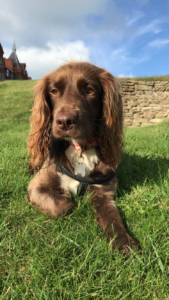Congratulations to Sox, Bonnie and Lucy!
Natalie, one of our nurses, runs our desensitisation clinics. Here she explains why three of her patients are our brave pets this month.
Sox, Bonnie and Lucy have all been very brave in the last month as they have enjoyed a stress free visit for their yearly vaccinations. Previously each dog has been described as nervous when they have come in for their yearly vaccination, sometimes needing to wear a muzzle or be taken away from their owner for the examination and vaccination to be performed. Whilst we see boosters as a relatively harmless trip to the vets some dogs can become anxious about it. I refer to it as like going to the dentist. If every time you went to the dentist, you had a filling or an injection you would soon start to become anxious about it too. So with the dedication of their owners these dogs have been coming to desensitisation clinics since their last vaccinations. This year it has meant that everyone has had a more relaxed visit. Vaccinations have been performed with minimal stress and without the need to wear a muzzle or be taken away from their owner.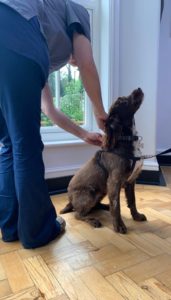
Different dogs can be scared of different parts of the examination and vaccination, so every clinic is tailor made to suit the individuals need and every dog is allowed to work at their own pace. Bonnie for instance, needed to work outside (in our secure enclosed area) to get her used to the stethoscope as this was part of the exam that worried her the most.
Desensitisation clinics can also be used to help muzzle train dogs. Lucy was muzzle trained as she can use what we call repelling behaviours when she is painful. These ‘repelling’ behaviours are used by nervous patients in an effort to move us away from them and can include barking, growling and snapping. 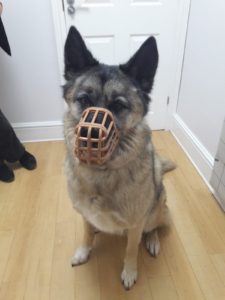 Sox was also muzzle trained as when he becomes anxious he can also use repelling behaviours. A correctly fitted muzzle means that the dog can still show all the natural behaviours they feel the need to (licking lips, panting, snapping) but means the veterinary staff are able to perform their job safely.
Sox was also muzzle trained as when he becomes anxious he can also use repelling behaviours. A correctly fitted muzzle means that the dog can still show all the natural behaviours they feel the need to (licking lips, panting, snapping) but means the veterinary staff are able to perform their job safely. 
Sox, Bonnie and Lucy are all different breeds, ages and gender and are owned by different families. This goes to show that any dog can become nervous. A common time for this to start is at around two years of age. At this age dogs are becoming socially mature and previous passive behaviours such as licking and sniffing, where they obtain more information about a worrying situation (also known as appeasement behaviours), may change into the repelling behaviours such as growling barking and biting. It is therefore important that both owners and veterinary staff recognise the signs of a negative emotional response in puppies and dogs and try to make there experience more positive. This can be done by using appropriate social contact – a hand to sniff, or a high value food reward given by the owner or thrown to the dog by the veterinary surgeon to where they feel safe (usually next to their owner).
Canine body language can often be missed or misinterpreted. Common behaviours such as licking, turning their head away from you, lifting a paw and freezing can be indicative of worry or indicate they are in an inhibitory state where they can gather more information about the situation before deciding how to react. We often think that our dogs love us as they are licking us (kissing us!), giving us a paw to shake, and being very good, when actually they may have frozen due to anxiety. Being aware of these subtle body language changes can make all the difference and prevent escalation of their fear and anxiety to repelling behaviours.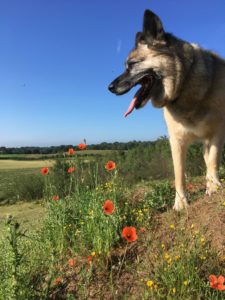
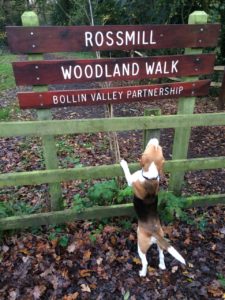
Sox, Bonnie and Lucy are going to continue with their desensitisation classes to ensure they remain happy and confident when coming to see us – and that their visit will be stress free next year too!